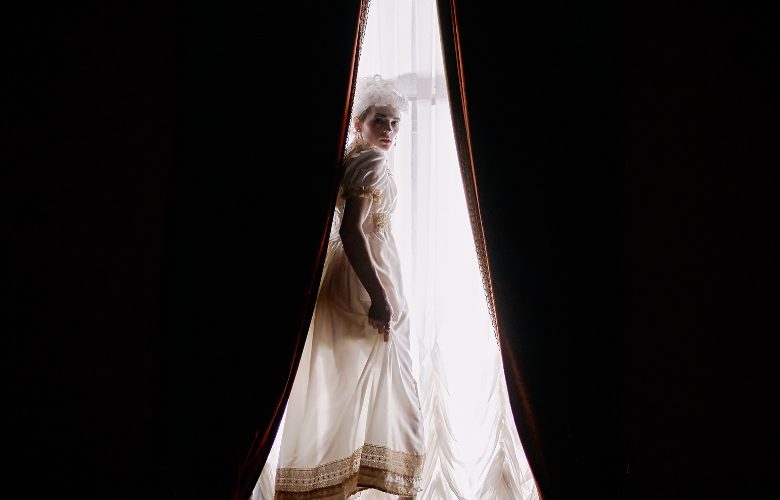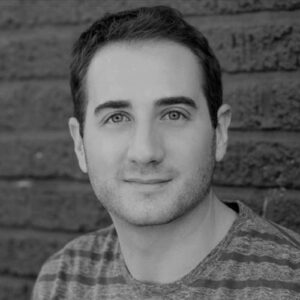
“Is belief a feeling?” I asked myself as I was writing out a new course description for one of my acting classes. Over the last many years, I have concluded that for acting in any medium, belief is perhaps the most powerful state from which to work from because it breeds confidence, playfulness, and spontaneity in performance. How many times has a director or coach suggested an actor “fully commit!” Of course, commitment isn’t a feeling, or something that be turned on with a switch.
Certainly, I teach in my directing classes that directors are tasked with cultivating belief for their whole team on a scale from getting behind a large project goal to the helping an actor believe the smallest bit of stage business. But I’ve recently become concerned with finding out exactly what belief means for the student and how it can be fostered and used. What principles of language can we implement to generate belief? And furthermore, how can we make sure the language we use in the classroom and rehearsal is actively in pursuit of building belief?
It is the job of the rehearsal process and its leaders to construct belief systems.
Everyone plays a role in this. It is not manifested from feelings (though those may be by-products), but through action, from collaborators showing respect, practicing humility, listening, and making choices about the way forward. More and more, these practices are in opposition to how we’re conditioned to communicate in today’s world over social media. So, as we train and educate on creative technique, it’s also incumbent for us to insist upon active language that helps accomplish the goal of shared understanding. For example, nothing helps to supplant an in-the-weeds discussion about a character’s feelings in a rehearsal like a pivot to actions and how the actor can play them.
Recently, I came across the term ‘expressive representation.’ This phrase describes when a person expresses an idea or position on something based solely out of their desire to present themselves a certain way, not out of whether they think this idea or position is true in terms of how they think or feel about it. It implies that they are reacting out of a broad identification of who they want to be seen as. This trend of posturing, perpetuated by our time on social media platforms, removes listening, consideration, and discernment from the equation of communication and discourse. My worry isn’t so much about what occurs on the online platforms, but of course it’s unhelpful there, I stress about how this behavior bleeds into the rehearsal or production process, how we think about building or understanding character and how we collaborate.
Bringing awareness to the difference between expression and action can be helpful for the actor to think about. Building character requires consideration and judgement, as the actor looks for why and how the character is doing what they’re doing. I’m afraid that if actors or directors unconsciously cut this process off in their real-life communication, it will become more and more difficult for them to explore the useful mechanisms when analyzing a script and discerning choices.
Of course, generalizations of all kinds can inhibit finding the most engaging choices in building character or storytelling. Sometimes actors or directors can fall into the trap of believing these generalizations and moving on. But we should be consistent in our endeavor to always get to the truth about a specific intention and look deeper into a theory. Acclaimed Director and Author William Ball writes in A Sense of Direction that the ideal rehearsal process is cyclical in nature where everyone is exploring and testing choices together. Nothing is ever quite finished or set in stone. We should always be in the action of exploring and testing, adjusting tactics along the way.
Consistency and dedication are fundamental to building belief.
Accountability to yourself and to your collaborators is fundamental to building belief. I’m rather drawn here to the idea of ‘make believe.’ I love the notion of the phrase which implies that belief is something that needs to be created. That it requires work. As a Director, I don’t like to operate with the assumption that the audience will always be willing to suspend their disbelief at will. Instead, I try to establish certain conventions that invite them to let go of what they think is possible in this world we created on the stage.
In these regards, belief isn’t a tool we can pick up, but a goal, a by-product of rigorously exploring, analyzing, making choices, and collaborating with principle. It doesn’t come easy. Belief isn’t a feeling, but a state of existence created from the structures of craft and technique in action. We need to focus on creating the circumstances for building trust for ourselves, our teammates, and our audiences, and this comes through technique and work, and shouldn’t be assumed or taken for granted.
In Virtual Veritas: Directing and Teaching Online


Steve is a freelance theatre director, actor, and educator. Currently, he is a Visiting Assistant Professor of Theatre at SUNY Oswego. He has taught theatre professionally at the West Side YMCA in New York City and in residence at Long Island University, in addition to private coaching and classes. Steve is a proud member of Actors' Equity and an Associate Member of SDC.
Read Full Profile© 2021 TheatreArtLife. All rights reserved.

Thank you so much for reading, but you have now reached your free article limit for this month.
Our contributors are currently writing more articles for you to enjoy.
To keep reading, all you have to do is become a subscriber and then you can read unlimited articles anytime.
Your investment will help us continue to ignite connections across the globe in live entertainment and build this community for industry professionals.